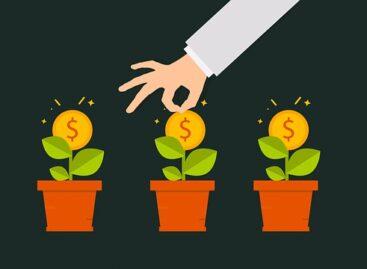Sustainability trends: what to watch out for in 2025?
The corporate green loan market is expected to grow strongly in 2025, and from July, the Hungarian National Bank will recommend that financial institutions learn about the sustainability activities of borrowers. This could prompt many businesses to delve deeper into ESG, which will create a strong demand for “green” professionals.
 According to Levente Suba, K&H’s Head of Sustainability, four main trends will define this year in the field of financial sustainability – both creating opportunities and challenges for companies. “The volume of corporate green loans continues to grow rapidly; CSRD reports will now be inevitable for companies at the top of the corporate value chain, which will lead to increased sustainability awareness among suppliers; from July this year, the MNB will recommend that banks request sustainability questionnaires for larger loans; and well-trained ESG specialists will be needed to prepare and interpret the above reports, which is also reflected in higher education,” Levente Suba listed the most important events of this year.
According to Levente Suba, K&H’s Head of Sustainability, four main trends will define this year in the field of financial sustainability – both creating opportunities and challenges for companies. “The volume of corporate green loans continues to grow rapidly; CSRD reports will now be inevitable for companies at the top of the corporate value chain, which will lead to increased sustainability awareness among suppliers; from July this year, the MNB will recommend that banks request sustainability questionnaires for larger loans; and well-trained ESG specialists will be needed to prepare and interpret the above reports, which is also reflected in higher education,” Levente Suba listed the most important events of this year.
The corporate segment will continue to drive the green loan market
Over the past year or so, the amount of corporate and municipal green loans has increased rapidly, and the amount of loans issued has doubled compared to the end of 2023: it increased by more than 300 billion forints, exceeding 610 billion by the third quarter of 2024.
“In the first two years after the launch, growth was sluggish, but last year brought a significant increase. This rapid growth is expected this year as well, although a further doubling may not be expected. The two driving sectors, which almost completely cover the entire corporate green loan portfolio, are renewable energy projects, where banks allocated two-thirds of the loans, and to a lesser extent, but growing more dynamically, green real estate projects, whose loan portfolio tripled in one year. In contrast, growth was more restrained in the retail loan market, where, after the MNB’s green home support program, the favorable loans of financial institutions could not provide such advantages as the central bank’s 2.5 percent loan rate. In the absence of a similar program, only slight growth is expected in this area,”
– Levente Suba indicated this year’s trends.
Related news
K&H: more and more middle-aged people live in their own apartments
🎧 Hallgasd a cikket: Lejátszás Szünet Folytatás Leállítás Nyelv: Auto…
Read more >Large companies expect easing inflationary pressures and decreasing public burdens
🎧 Hallgasd a cikket: Lejátszás Szünet Folytatás Leállítás Nyelv: Auto…
Read more >This is how humans and AI work together – the artificial intelligence revolution in the workplace
🎧 Hallgasd a cikket: Lejátszás Szünet Folytatás Leállítás Nyelv: Auto…
Read more >Related news
Christmas shock in commerce: for the first time, we can pay with bank cards in fewer places
🎧 Hallgasd a cikket: Lejátszás Szünet Folytatás Leállítás Nyelv: Auto…
Read more >Hungarian Confectionery Manufacturers Association: trends in 2025 and prospects for 2026
🎧 Hallgasd a cikket: Lejátszás Szünet Folytatás Leállítás Nyelv: Auto…
Read more >Most grocery chains will be open until noon on December 24th
🎧 Hallgasd a cikket: Lejátszás Szünet Folytatás Leállítás Nyelv: Auto…
Read more >






